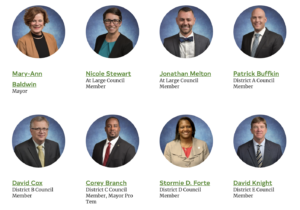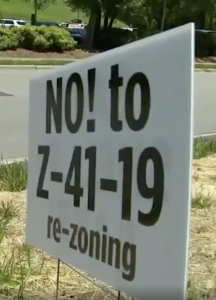
7 Ways to Make Your Community’s Voices Heard
Based on the collaboration of neighbors facing the upzoning Z-41-19 near Shelley Lake Park, here are 7 Actions developed by WeLoveShelleyLake that you can implement to make your collective voice known to city leadership and advocate for responsible, equitable development of our city.
The surprise dismantling of the CACs and ever-changing rules of engagement for participation in City Council meetings has muted the voice of the citizenry and left us on our own to devise methods we can employ to restore our voice and be heard.
Tapping into the power of our diverse neighborhoods and communities, we can let city leadership know that we are a part of the growing public that is engaged and will remain engaged in the process. Remember, each of us possesses a variety of skill sets and expertise.
Crowdsourcing our unique gifts and maintaining a collaborative mindset and a persistent spirit will allow us to provide public access to truthful, vetted information. Access to this information is critical as it enables us to make well informed decisions on land use management and rezoning topics that are important to our communities and city.
7 Actions You Can Implement Now
1. Get to Know Your Area
Take time to get to know your area. Learn more about the city’s vision for your area by reviewing a few maps, all contained in the city’s 2030 Comprehensive Plan: Existing Zoning and Future Land Use Maps, Growth Framework Map, Urban Form Map, and Planned Transit Facilities Map. https://raleighnc.gov/planning-and-development
Notice undeveloped/underdeveloped and declining properties in your area, including amenities in the area that might attract development. Developers continually scout for locations years in advance. Be aware of stream channels in the area. They may be subject to stream buffer protections, unless the property owner or developer is successful in having the protections removed. In those cases, there is only a short window of opportunity to appeal the ruling . The moral of this story? Start educating yourself NOW.
2. Get to Know Your Neighbors
Get to know your neighbors and those in neighboring communities. Share information about prospective development and rezoning in your area. Don’t assume everyone got “the letter,” the required, by law, first letter that must be sent to property owners 500 feet from the proposed site. If a letter arrives, share its contents with the greater community, those neighbors beyond the 500 feet, and start a file- SAVE THE LETTER AND ENVELOPE.
In our case the original map of properties that was part of “the letter” included two properties that were NOT part of the rezoning. The document presented a false narrative. This map has been excluded from the application on file and another image has been provided.
3. Get Involved
Make attending the first meeting with the developer a priority! Connect with others attending and share contact information. Take notes, take photos, and ask questions. Don’t be shy! Have the presenters provide the reference sources used to arrive at their stated data and information so that you can confirm its validity and identify any bias present.
4. Write emails, Ask Questions, and Demand Key Conditions be Included for Rezoning Approval
 Write your District City Council Representative, the Mayor and your two At-Large City Council Representatives and ask questions. Hold your Council Representatives accountable! Remember they were elected to the office and should continually work to serve the interests of their constituents.
Write your District City Council Representative, the Mayor and your two At-Large City Council Representatives and ask questions. Hold your Council Representatives accountable! Remember they were elected to the office and should continually work to serve the interests of their constituents.- Contact the Developer/ Developer’s Attorney and ask questions. Obtain the reference sources being used and confirm its validity and identify any bias present.
NOTE- If properties are being “upzoned” to R-10 and above- DEMAND from the developer and your representatives (Mayor, District Council member, and two At-Large Council members) that two conditions be included in the rezoning application: minimum 15% affordable housing dedicated to 30-50% AMI and Green Stormwater Infrastructure. Not doing so would be a huge missed opportunity to provide needed, affordable housing, reduce exclusionary zoning practices, and protect our environment. Continually demanding these two conditions be included in any increased density, multi-family development forces our elected officials to honestly address these important city issues.
5. GET IT IN WRITING!
Always confirm what you read and what you are told. Track your contacts. Create a contact log (Date/ Time/ Person Contacted/ Contact # or email/ Notes of Conversation/ Follow-up email sent/ Reply Received) for in-person and phone conversations. Take the time to confirm what you believe was said in the conversation through a follow-up email.
6. Educate yourself.
Explore the wealth of information provided online by the City of Raleigh on its Planning and Development Department webpage https://raleighnc.gov/planning-and-development. Here, you will be able to access the city’s 2030 Comprehensive Plan, Unified Development Ordinance (UDO), Text Changes to the UDO, and Current Development Activity. You can locate your rezoning case file in the listing of Current Development Activity [zoning cases (z)]. Your case file will provide you with the application for rezoning and the staff report. Livable Raleigh also provides a list of useful Resources Here.
While the 2030 Comprehensive Plan and the UDO are very helpful to understanding Raleigh’s land use vision, policies, and regulations, understanding the rezoning application may prove intimidating. Don’t let that stop you from asking for clarity. Contact the city planner assigned to your case and ask questions. The planners are friendly and patient! Also, we encourage you to attend an “Ask the Planner” event when available. [COVID-19 has disrupted the city’s ability to provide these events at present. Check to see if there is another alternative.]
7.
Share What You Learn

Yard Signs Get the Message Out
Share what you learn and be an advocate- Talk, Call, Text, Post, Plant yard signs, Make t-shirts, Create petitions!
- Collaborate with a small group of interested and available parties to create your administrative and communication infrastructure. Avoid using your everyday, personal email address. Instead, establish a group entity and “claim the name.” You will use this name to maintain continuity across all of your communication platforms- email, website, media applications, and print. Keep it simple and use the rezoning case file number, the location, an easy slogan or acronym. For example, we work under the name “We Love Shelley Lake.”
- Use your group’s email to create Twitter, Instagram, Facebook, and other social media accounts you may want to use as a delivery vehicle Name these accounts your group email name or something similar. Don’t worry, it doesn’t matter if you use the account, the initial goal is to prevent someone else from highjacking the account by acquiring the account under your name. Before adding email address to your distribution lists, always confirm they want to be included.
Helpful Tip! Protect your email recipients from unwanted emails and “reply all” overload. Send group emails by placing all recipient addresses in the bcc: location and leave the To: and cc: areas blank.
Always contact individuals on your mailing list to confirm they want to be included (opt in) on major statements or actions. This maintains trust and integrity of operation. There are lots of reasons a person may opt out of a particular group action/ letter- they may disagree, they may be in conflict due to their profession or employer, or they may decline for some other personal reason.
- Create a website or some way to organize, instantly update, and share information with others. We initially worked with a google doc in a “running record” format but quickly migrated to website format (google site) which allowed information to be better organized and accessed.
Helpful Tip! Provide quick, easy access and increase site traffic by using a shortened URL address and a QR code. Using a bit.ly to shorten the URL address will allow you to use your email name for continuity, and QR codes can be personalized.
Most bit.ly/ URL shortener and QR Code providers allow at least one account for free. Check out these sites for more information: https://zapier.com/blog/best-url-shorteners/ and https://www.qr-code-generator.com
- Create a filing system to keep your records, correspondence, and research organized and readily accessible. Setting up a main file and subfiles early on will allow you to stay on top of things as your group navigates the rezoning process.
While all this work may not result in zoning and development that the majority of the citizenry seeks, it will provide us with a record of how our mayor and council members chose to address these issues and serve as a report card for our elected officials. In October 2021, we have the power to elect representation that supports our collective view and better ensure our voices are heard in the future.
Got questions? We are happy to help. Contact us at weloveshelleylake@att.net and include the subject line Upzoning 102 article.
